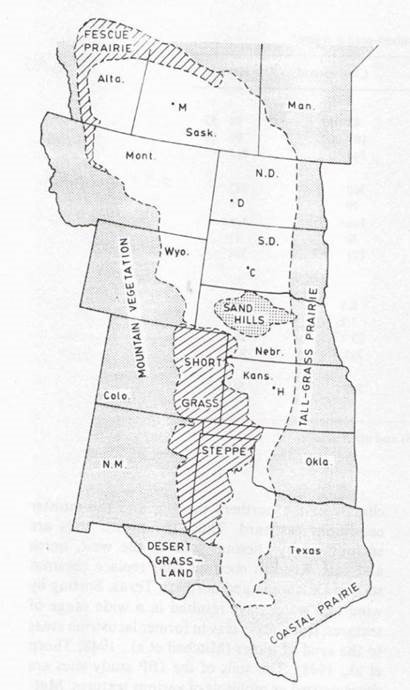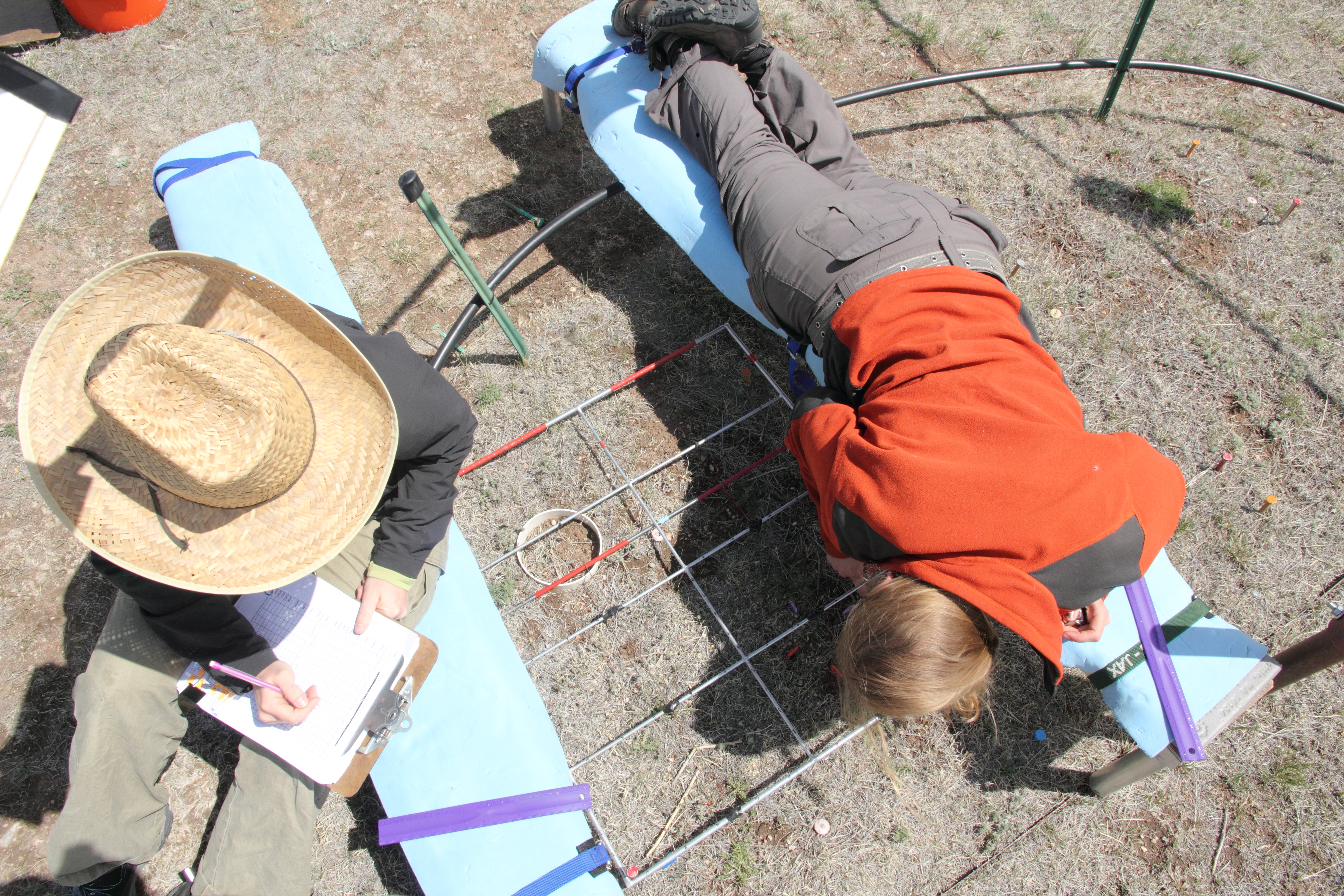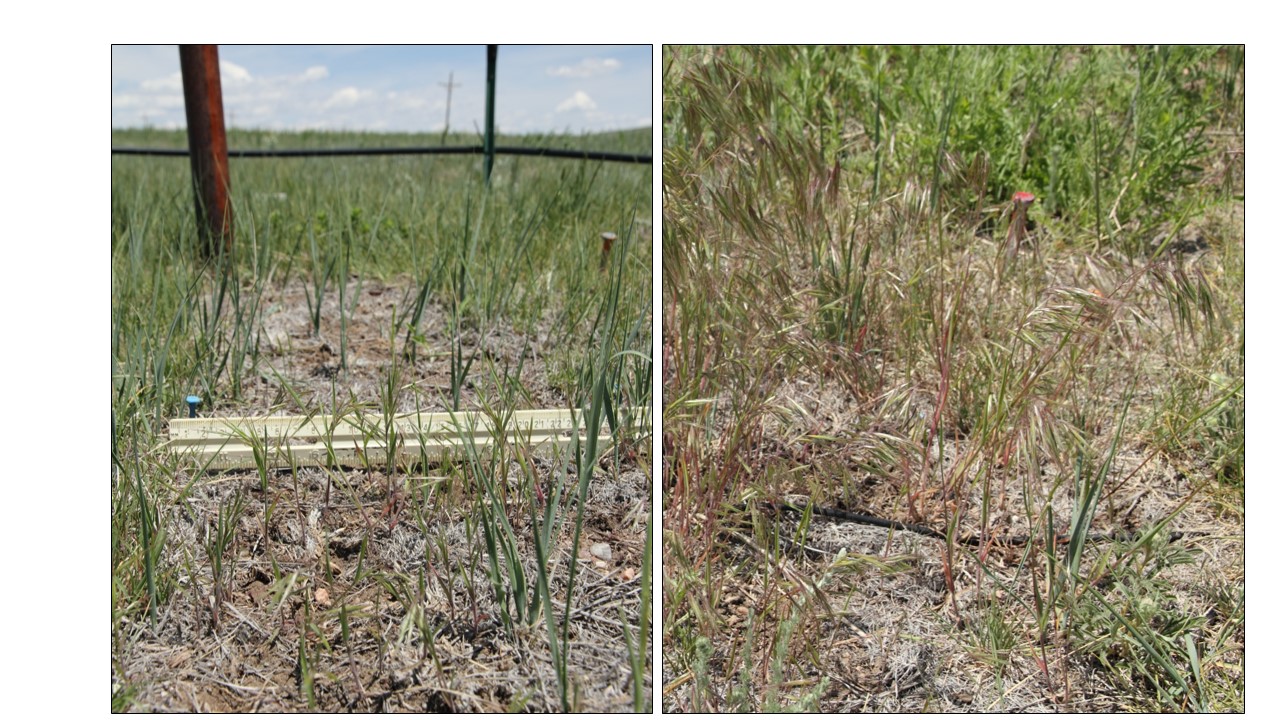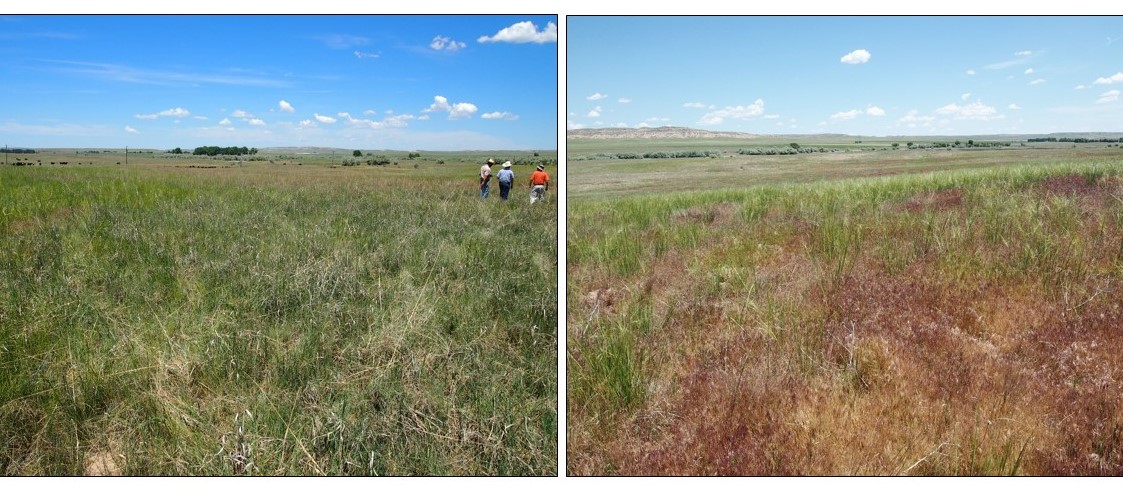
Climate change opens new phenological niche . . . Enter plant invader?
By Julie Kray
Climate change is altering phenology in temperate ecosystems around the world by extending favorable conditions for growth into spring and autumn1,2,3. Now, as vacant niches open up in seasons that once were marginal, it raises a key question: which species will fill them? Populations of resident native species may expand or adapt to occupy new phenological niches, but if they are slow to keep pace with climate change, others could take advantage4.

In the mixed-grass prairie, North America’s largest remaining intact grassland, cold winter temperatures may have thus far stalled invasion by one of the continent’s most problematic plants. Cheatgrass (Bromus tectorum L.), a winter annual weed that germinates in autumn and sets seed the following spring, has invaded millions of hectares of native rangeland in other regions of North America5. Cheatgrass has yet to become dominant in the mixed-grass prairie, but it’s unclear whether it has been limited by temperature or something else—perhaps strong competition from the disturbance-adapted native plant community, or the timing of precipitation, most of which falls in summer. Looking ahead, should we expect the mixed-grass prairie to resist invasion in the coming decades, or will steadily warming temperatures open a new niche for cheatgrass?

To shed light on this question, we seeded cheatgrass into native prairie at the Prairie Heating and CO2 Enrichment (PHACE) experiment near Cheyenne, Wyoming. We manipulated the climate with infrared warming (+1.5 oC day/3 oC night) and free-air CO2 enrichment (to 600 ppmv), simulating another global change which can directly increase cheatgrass growth rate, and measured cheatgrass growth and reproduction over two years. We found that warming more than tripled cheatgrass biomass and seed production6 by accelerating spring growth and enabling cheatgrass plants to consume water and nutrients before native perennial plants started growing. Remarkably, warming increased cheatgrass growth in both a wet and a dry year, and also with and without competition from native plants.

Elevated CO2, by contrast, had little effect on cheatgrass growth or reproduction. This surprised us for two reasons: (1) in greenhouses and growth chambers, higher CO2 can increase cheatgrass growth7, and (2) it also benefits other invasive plants at PHACE by increasing water availability8. But, for cheatgrass, potential benefits from elevated CO2 were not realized as growth became more limited by nitrogen availability.

Our findings suggest that, in the mixed-grass prairie, warming will indeed expand the phenological niche for cheatgrass, enhancing its ability to grow when native plants are inactive, and competition for water and nutrients is least intense. Meanwhile, elevated CO2 could have minimal effects on cheatgrass. The net result, however, is worrisome: warmer temperatures may give cheatgrass an early season competitive edge, making the mixed-grass prairie more susceptible to invasion. Cheatgrass has already transformed vast landscapes in the U.S. Great Basin region, reducing biodiversity, carbon storage, and forage production for livestock and wildlife. With that possibility now on the horizon in the mixed-grass prairie, proactive management may be needed to keep these ecologically and economically valuable lands from a similar fate.
For related results from the PHACE study, see this and this and several other posts on EcoPress, or visit the PHACE project website here.
1Parmesan, C. Yohe. G. 2003. A globally coherent fingerprint of climate change impacts across natural systems. Nature 421(6918): 37–42. doi: 10.1038/nature01286
2Reyes-Fox, M., Steltzer, H. et al. 2014. Elevated CO2 further lengthens growing season under warming conditions. Nature 510: 259-262. doi:10.1038/nature13207
3Buitenwerf, R. Rose, L. Higgins, S. 2015. Three decades of multi-dimensional change in global leaf phenology. Nature Climate Change 5: 364-368. doi:10.1038/nclimate2533
4Wolkovich, E., Cleland, E. 2014. Phenological niches and the future of invaded ecosystems with climate change. AoB PLANTS, 6, 1–16.
5Bradley, B., Mustard J. 2006. Characterizing the landscape dynamics of an invasive plant and risk of invasion using remote sensing. Ecological Applications, 16, 1132–1147.
6Blumenthal, D., Kray, J. et al. 2016. Cheatgrass is favored by warming but not CO2 enrichment in a semi-arid grassland. Global Change Biology, doi: 10.1111/gcb.13278
7Smith, S., Strain B., Sharkey, T. 1987. Effects of CO2 enrichment on four Great Basin grasses. Functional Ecology, 1, 139–143.
Ziska, L., Reeves, J., Blank, B. 2005. The impact of recent increases in atmospheric CO2 on biomass production and vegetative retention of cheatgrass (Bromus tectorum): implications for fire disturbance. Global Change Biology, 11, 1325–1332.
8Blumenthal, D., et al. 2013. Invasive forb benefits from water savings by native plants and carbon fertilization under elevated CO2 and warming. New Phytologist, 200:1156-1165. doi: 10.1111/nph.12459.
Mixed-grass prairie map image credit: Coupland RT (1992) Mixed Prairie. Ecosystems of the world: natural grasslands, introduction and western hemisphere. Elsevier, New York, pp 151–182.